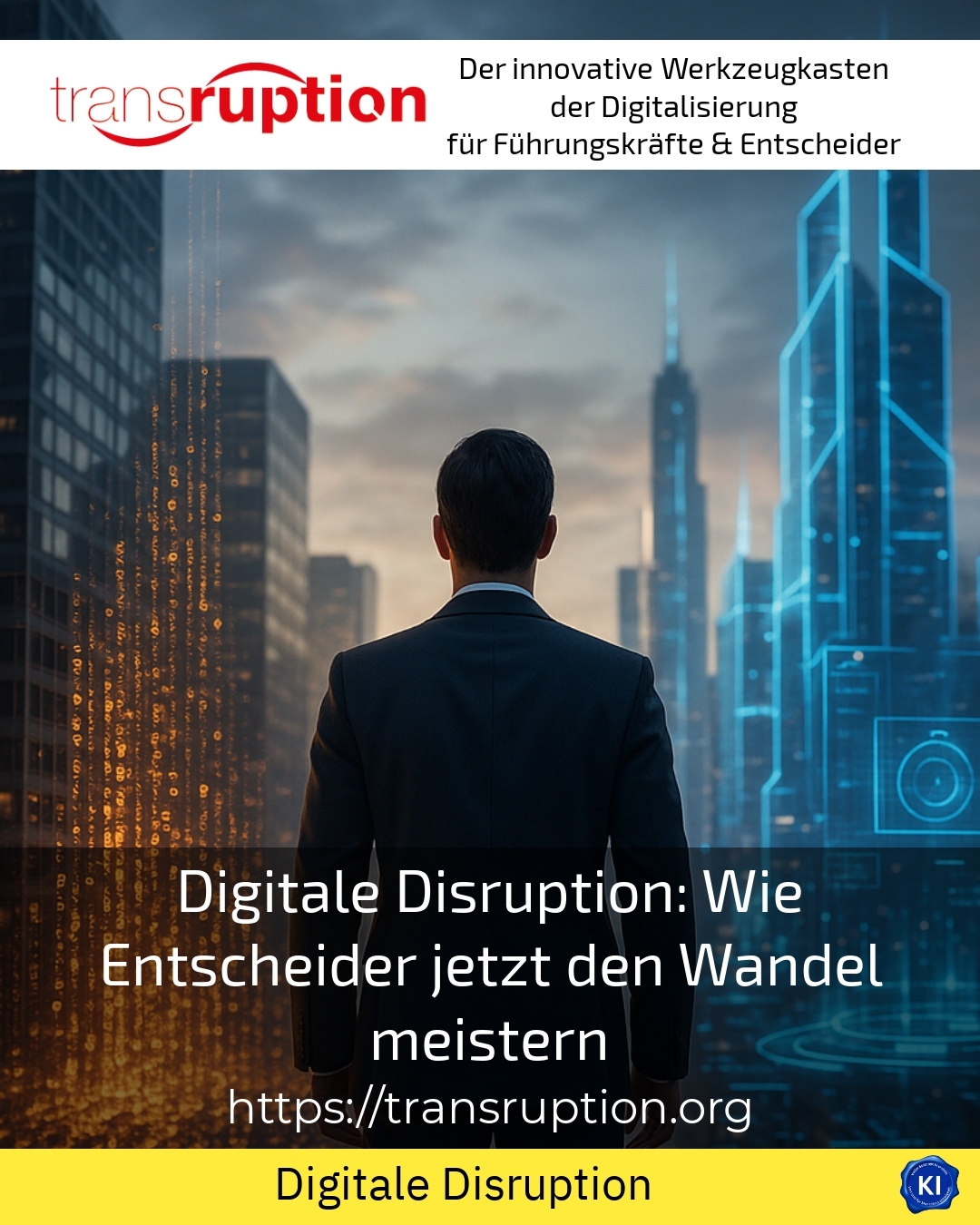The Digital disruption is profoundly changing the business world. New digital technologies and innovative business models are challenging traditional structures. Managers are feeling the pressure not only to accompany change, but to actively shape it. In times when technologies are developing rapidly and customer requirements are changing rapidly, digital disruption brings with it both challenges and opportunities.
Understanding digital disruption: Fundamentals and implications
Digital disruption is the process by which digital innovations transform or replace established products, services and business models. Examples from various industries illustrate this vividly: in the taxi industry, Uber has fundamentally transformed the service that people have been used to for many years with its app. In the hotel industry, Airbnb often makes traditional booking channels redundant. The media industry has also been transformed by streaming providers such as Netflix, while Spotify has reshaped the music industry[1][2][3].
These developments show how digital disruption is forcing companies from completely different sectors to reorganise their markets. Decision-makers must now recognise trends at an early stage and act flexibly to avoid being left behind.
How decision-makers can actively manage digital disruption
In practice, managers are faced with the task of conceptually supporting and implementing change processes. What should they pay attention to?
Early analysis and trend monitoring
Successful companies invest in monitoring new technologies at an early stage. Regular market analyses and exchanges with digital innovators help here. For example, the introduction of digital sensor technology and cloud-based analytics enabled a medium-sized mechanical engineering company to minimise downtimes and reduce maintenance costs. This project was accompanied by an experienced transruptions coach, who supported the change process and engaged the workforce.
Openness to new business models
Changing customer expectations demand innovative offerings. In the financial sector, FinTechs such as Revolut and PayPal have caused traditional banks to rethink their approach with digital payment solutions. A logistics service provider implemented digital freight management with the help of artificial intelligence in order to plan routes more efficiently. The introduction was accompanied by coaching so that employees could overcome inhibitions and utilise new opportunities.
Promoting digital culture and internal acceptance
Digital disruption also means cultural change. Building an open culture of innovation is crucial. For example, one insurance company supported the use of AI-based risk analysis apps through targeted internal support. Employees were trained and involved in decision-making processes, which increased acceptance and strengthened the ability to innovate.
BEST PRACTICE at the customer (name hidden due to NDA contract) The use of IoT technology has improved the monitoring of production lines at a medium-sized automotive supplier. The company was able to reduce downtime and increase product quality. The accompanying consultancy meant that the team understood and was motivated to help shape the digitalisation strategy.
Digital disruption in practice: examples for orientation
Digital disruption manifests itself differently in numerous industries. Here are some specific examples:
- Retail: Amazon is setting new standards with its online marketplace. Customers benefit from a large selection and fast delivery, while many traditional retailers have to question their market position.
- Entertainment: Streaming services such as Netflix and Spotify are replacing physical media and established distribution channels.
- Mobility: Tesla is fundamentally changing the automotive industry through electromobility and autonomous driving functions, forcing established manufacturers to adapt their strategies.
These examples illustrate the diversity of digital disruption phenomena and show how companies need to adapt their strategies in order to remain competitive.
Transruption coaching: support in coping with change
Just as technological adjustments are essential, digital disruption also requires support at an organisational level. Disruption coaching can help managers and employees to successfully organise change processes. Clients often report that the combination of technological expertise and psychosocial support reduces inhibitions and accelerates implementation.
A typical coaching topic is the development of digital skills in the team. This allows employees to be trained in agile methods and involved in the definition of new business models. This approach strengthens innovative power and promotes long-term competitiveness.
My analysis
Digital disruption is bringing about far-reaching changes that companies should actively manage. Decision-makers are required to recognise future trends at an early stage and proactively support projects. Technological innovations are only one side of the coin - shaping an open corporate culture and qualified change management play an equally important role. Practical examples show how diverse the opportunities are when companies approach change with courage and good support.
Further links from the text above:
Digital disruption - IT portal
Digital disruption: your roadmap to success - Sauldie.org
Digital disruption in online marketing - SEO kitchen
For more information and if you have any questions, please contact Contact us or read more blog posts on the topic TRANSRUPTION here.
















